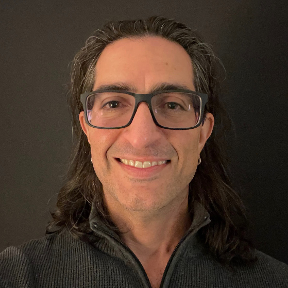Welcome to the Onshape forum! Ask questions and join in the discussions about everything Onshape.
First time visiting? Here are some places to start:- Looking for a certain topic? Check out the categories filter or use Search (upper right).
- Need support? Ask a question to our Community Support category.
- Please submit support tickets for bugs but you can request improvements in the Product Feedback category.
- Be respectful, on topic and if you see a problem, Flag it.
If you would like to contact our Community Manager personally, feel free to send a private message or an email.
Options
Merging surfaces
 mahir
Member, Developers Posts: 1,315 ✭✭✭✭✭
mahir
Member, Developers Posts: 1,315 ✭✭✭✭✭
I have a FS that deletes some faces from a solid and then fills in the open edges with opFill. Unfortunately, I don't see a Merge with all option for opFill. Now how do I recreate the solid part.I tried using Enclose, but I'm having trouble querying for the hollow surface body. qCreatedBy doesn't seem to do the trick. Little help?
https://cad.onshape.com/documents/833dffabd805010ce935bee2/w/d15b586cc7aa564eee76cc28/e/e06b1747a4949c3641434da2
https://cad.onshape.com/documents/833dffabd805010ce935bee2/w/d15b586cc7aa564eee76cc28/e/e06b1747a4949c3641434da2
Tagged:
0
Best Answer
-
 Jake_Rosenfeld
Moderator, Onshape Employees, Developers Posts: 1,646
Jake_Rosenfeld
Moderator, Onshape Employees, Developers Posts: 1,646  @mahir
@mahir
@konstantin_shiriazdanov was on the right track. If you set up something like this at the beginning of your function, it will track the bodies (in this specific case):var corners = evaluateQuery(context, definition.corners); //array of individual corner surface queries var bodies = qUnion(evaluateQuery(context, qOwnerBody(qUnion(corners))));
Generally, this is not a safe way to get a robust query for a body. What's happening here is that we're setting up a query directly for the transient id of the body in question (you can see this if you println(bodies)). You'll have to then trust that none of the internal operations will change the identity of the body, which seems fine in this specific case, but isn't a guarantee.
If you want the body right after you do the delete face, you could use:const sheetBody = qOwnerBody(fillEdges)
Or, if I could suggest a more systematic change: try using fill instead of opFill and just use the "merge with all" behavior directly. The syntax will look like:fill(context, id, { "surfaceOperationType" : NewSurfaceOperationType.ADD, "edges" : [{"entities" : fillEdges, "continuity" : GeometricContinuity.G1}], "defaultSurfaceScope" : true // <-- "merge with all" });
Jake Rosenfeld - Modeling Team6
Answers
Edit:
the way described above doesn't work, nor I was able to get created sheet body by subtracting queries for all surfaces after and before deleteFace was applied.
@konstantin_shiriazdanov was on the right track. If you set up something like this at the beginning of your function, it will track the bodies (in this specific case):
Generally, this is not a safe way to get a robust query for a body. What's happening here is that we're setting up a query directly for the transient id of the body in question (you can see this if you println(bodies)). You'll have to then trust that none of the internal operations will change the identity of the body, which seems fine in this specific case, but isn't a guarantee.
If you want the body right after you do the delete face, you could use:
Or, if I could suggest a more systematic change: try using fill instead of opFill and just use the "merge with all" behavior directly. The syntax will look like:
fill(context, id, { "surfaceOperationType" : NewSurfaceOperationType.ADD, "edges" : [{"entities" : fillEdges, "continuity" : GeometricContinuity.G1}], "defaultSurfaceScope" : true // <-- "merge with all" });Definitely finicky. A useful way of getting around them (if you need to) is to create a robust query like this:
The union is needed in the second part because tracking queries do not evaluate to their original geometry, so we're unioning together the original geometry with any future geometry. In this way, whether the transient id changes or stays the same, the query will evaluate to what you expect. YMMV, but if you ever use this and it doesn't behave as expected, we're here to help.
In most cases (including this one) the `op` functions do provide a more convenient programmatic interface. The tradeoff is that the full feature may do a lot more than any one underlying operation, so sometimes it's worth it to wrangle an odd set of parameters to get the robust functionality. Some other cases of this are patterns, mirrors, and any time you want to interact with Sheet Metal.